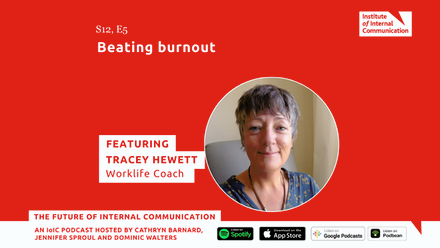One thing that we have all missed is human contact – interactions with colleagues, friends, extended family and even neighbours. At times, we've felt isolated, lonely and unmotivated, and this is why people managers have had such an important role to play.
As internal communication professionals, we have long recognised the importance of people managers: a valuable pivot point between the top and bottom of a business, cascading messages from the top and capturing feedback from the bottom.
Research published in lockdown indicates that, during this period, managers have been significantly more effective at capturing employee views and feedback than surveys and polls. Indeed, two-thirds (66%) of organisations have stated they have been "relying" on manager feedback during this time.
But not all people managers are created equal. I find this so often when speaking with clients. Some are naturals – emotionally intelligent, empathetic, patient and considered – while others are not, simply inheriting people-management responsibilities with a promotion. This makes me think of that common phrase "people leave managers, not companies".
A number of internal communication audits we have conducted for clients in the past one or two months all highlight how significant these individuals have been throughout lockdown and how they need to be used as part of internal communication strategies going forward.
As part of my remit at Hanover, I regularly run training for people managers on the art of communication. These sessions include exercises on how to use body language, tone, phraseology and intonation to communicate a message effectively. Whether you're a CEO or a management trainee, communication is a fundamental part of every role in business – and it is easy for people to forget that.
When I close a session, I always leave behind my top tips and watch-outs:
TOP TIPS
1. Take the time to properly prepare for meetings. Whether you are there to deliver a message, or to listen to a colleague and see how they're feeling, set aside time to get yourself ready to ensure it's a productive meeting.
2. When speaking to a group, especially if you're making an announcement, memorise the first minute of what you want to say. Eye contact is hugely powerful, and your colleagues will be more likely to listen to you if you're looking at them, rather than a piece of paper.
3. If you want people to engage, it is essential to slow down your pace of delivery. We tend to speak quickly if we're excited or nervous; it will feel strange at first but, if you want to make an impact, speak slower and leave bigger gaps between your points to allow the information to sink in.
4. Use your hands in a controlled manner to reinforce your points. In addition to this, you should think more broadly about your body and how you use it; this should be part of your preparation.
5. Work hard to make your content clear, concise and compelling. Your messages are much less likely to land if you ramble – whether you want to write out your whole update or just key phrases, make sure you're able to stay focused on what you're trying to say.
WATCH-OUTS
1. Failing to listen effectively to what others say, especially when empathy is needed. Open communication and trust are essential parts of the manager and managee relationship. To show you're listening, respond (whether it's a gentle nod or an "OK"), summarise (repeat key points back to them to demonstrate you heard and understood their point) and, if appropriate, ask questions (whether this be for clarification or more information).
2. Blaming people for not listening when you haven't communicated clearly enough. Consider whether your point was clear and delivered effectively.
3. Relying wholly on digital channels rather than a mix of channels, including face-to-face communication. This has been a real challenge in lockdown as face to face hasn't been an option, but don't forget to use the channels that give a little more room for "being human" – whether this be a telephone call (where you can hear someone's tone, intonation and better judge their mood) or video call (where you can not only hear them but also see them and their body language). A lot can be lost on an email or Yammer post.
4. Displaying poor "closed" body language when speaking about professional issues. Think about what you look like to the person you're speaking to. How you look will affect how they feel and communicate with you. Find your "neutral" position – for me, it's a soft face, eyes forward, legs crossed with my hands together on the desk. If I feel the temptation to cross my arms or "close off", I tend to take a sip of tea or water instead and then try to return to neutral.
5. Not considering the character and behaviour of the person you are communicating with. For example, do they prefer detail? Will they ask questions? Are they naturally nervous and will they need reassuring?
People managers are going to continue to be front and centre, especially as many businesses welcome back furloughed colleagues and transition back to the office over the coming months.
Make sure your people managers have the right skills and understanding to help bind your employees together.






